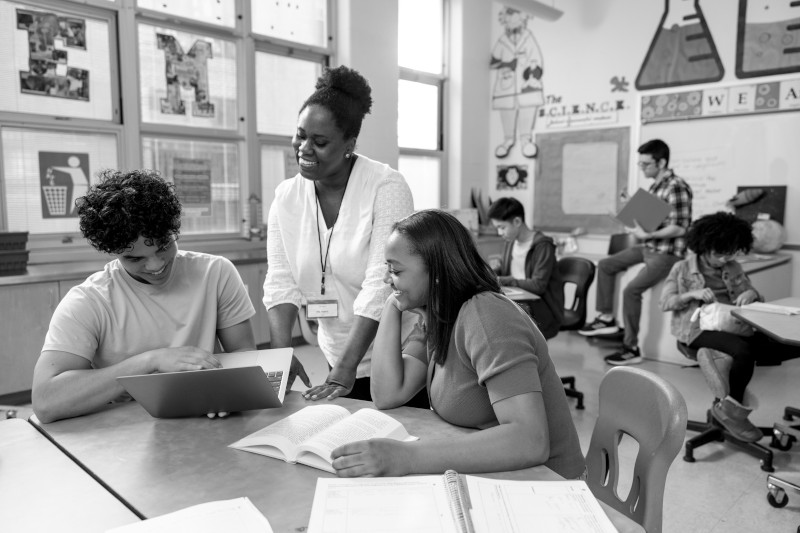- Sales & Support
- +61 2 4225 9698
- [email protected]

Back to Learning: 7 Essential Strategies for Post-Summer Success.
February 19, 2024
Turning the Page: Tackling the Myths and Assumptions that Impede Reading in Schools.
August 15, 2024Australia Unveils New Curriculum Version 9: Embracing Innovation in Education

By [Helena Karas, 2024], Renaissance Learning Australia Professional Development Coach and Classroom Teacher
In a landmark move, the Australian education sector has moved all schools across to the new Version 9 Curriculum, with many schools trialing it since 2022. This new release marks a heralded new era of learning that boasts significant changes. However, many educators are asking the question: are these changes enough to spark a drastic change in our students’ K-12 reading abilities, and do they have the time to embrace this innovation?
Australia’s current reading climate shows that 1 in 3 Australian students are not mastering the reading skills they need. With these figures marking concern version 8.4 of the Australian Curriculum highlighted a traditional approach to literacy, asking for regular exposure to authentic texts in isolation. All educators are familiar with our Literacy Teaching Cycle, however Version 9 sparks the idea that Literacy not only holds a place within our two-hour morning block or amongst our English Secondary teachers. Will these new curriculum adjustments be the answer we need and are our teachers equipped for this empowering change?
Highlighting the change
In response to the evolving landscape of education, Curriculum Version 9 introduces several key changes aimed at equipping students with essential skills and fostering holistic development:
- Cross Curriculum Learning
Departing from traditional siloed subjects, the new curriculum encourages interdisciplinary learning. By exploring connections between different fields of study, students are exposed to a range of literacy skills all throughout their Key Learning Areas.
- Culturally Responsive Education
Celebrating Australia’s rich cultural diversity, highlighting the need to incorporate rich First Nations texts and authors into our ongoing practice.
- Emphasis on Digital Literacy
Recognizing the pivotal role of technology in modern society, Curriculum Version 9 places a strong emphasis on digital literacy.
- Focus on Well-being and Resilience
Addressing growing concerns about mental health, new priorities of the well-being and resilience of students. Through dedicated programs and resources, educators will support social and emotional development, ensuring students have the tools to navigate life’s challenges with resilience and empathy. By using PASS (Pupil Attitudes to Self and School) from GL Assessment we can take the guesswork out of understanding students social and emotional wellbeing.
Embracing this innovation:
This transformative curriculum not only marks a significant departure from traditional approaches but also underscores Australia’s commitment to preparing students for the challenges of the 21st century.
A holistic approach amongst literacy teachers, science teachers, library staff etc. Ensuring staff are aligned to achieve success for our students. We aim to empower teachers with the tools to delve into texts and bolster students’ literacy skills while still adhering to curriculum requirements. This approach seamlessly integrates literacy support into various subjects.
When you think of an expert, whether it’s a musician, an athlete, or a chef, the common denominator for their success is most certainly the amount of practice they put in. When it comes to reading, the same holds true. Students who read more are better readers. Learning to read requires an enormous amount of explicit and systematic instruction, provided over many years, with a lot of practice. However, practice only makes perfect once students have mastered the skills. Teachers can identify if students have mastered these foundational skills using the Star Reading assessment, looking at the ‘Diagnostic Report’ that outlines the summarised scores achieved for individual students from an assessment.
Considering this, two questions emerge: How can educators from all disciplines address these needs, and how can we best support students in maximising their purposeful reading practice?
Empowering and supporting teachers
- Through personalised recommendations and real-time progress tracking, educators can tailor instruction to meet the unique needs and interests of each student. With goal setting and self-, peer or teacher feedback teachers are meeting the new curriculum requirements of providing timely feedback e.g. AC9E1LY02 (ACARA). myOn Projects can provide a digital solution for teachers and students to meet these demands of catering lessons to students and setting goals and providing feedback.
- Furthermore, in data analytics, teachers can identify areas for improvement and intervene proactively, identify the levels of students in their class and produce texts that students can engage with. In 2023, ACER and Monash University found that nationally, up to 1 in 5 students starts secondary school 3 or more years behind their peers, having scored at or below minimum standards for reading. These students are at an incredible disadvantage when it comes to students reading textbooks that are meant for students reading at year level.
Students making the most of their purposeful reading practice: Providing access and opportunity
- Students can certainly practice reading, but we need students to further understand what they are engaging with. A way of doing so in the classroom is independent comprehension work. This allows students to explore a range of comprehension strategies, building a foundation of skills they can use when reading any text. Such skills can be developed through the use of Renaissance Accelerated Reader which allows students to explore an expansive list of over 51,000 book quizzes to gauge comprehensive understanding on a range of non-fiction and fiction texts. Comprehension is a strong predictor of overall academic achievement (Luke, Dooley and Woods, 2011). Large scale international studies of literacy achievement such as the Programme for International Student Assessment (PISA), stress the importance of students being able to apply their knowledge and skills to real-life situations
- Renaissance Learning myON offers a vast digital library with thousands of books across various genres and reading levels, providing students access to diverse content that aligns with Curriculum Version 9’s interdisciplinary focus.
The Australian Curriculum isn’t asking teachers to move away from what we know works. Version 9 is seeking a balanced approach where a united front stands towards students’ literacy learning.
‘Let’s shift our thinking that as educators we are independently leading our students across a tight rope, but instead unifying our approach and intertwining our practice to ensure we get the students to the other side.’ H.Karas
Empowering Educators, Inspiring Learners
In summary, the evolution to Australia’s Curriculum Version 9 represents a significant opportunity for educators to enhance their practice and better support student learning. The specific changes highlighted above encourage a holistic approach, enabling teachers to foster literacy skills across every Key Learning Area. Explore how Renaissance’s Products can elevate teaching practices and inspire learners, aligning seamlessly with Version 9’s goals.
Sources
Grattan Institute. (2024). The reading guarantee: Grattan Institute report. Retrieved from https://grattan.edu.au/wp-content/uploads/2024/02/The-Reading-Guarantee-Grattan-Institute-Report.pdf
Australian Council for Educational Research. (n.d.). One in five secondary students has not mastered basic skills. Retrieved from https://www.edresearch.edu.au/other/articles/one-five-secondary-students-has-not-mastered-basic-skills
Department of Education and Training, Victoria. (n.d.). Literacy focus: Comprehension. Retrieved from https://www.education.vic.gov.au/school/teachers/teachingresources/discipline/english/literacy/readingviewing/Pages/litfocuscomprehension.aspx#link101



